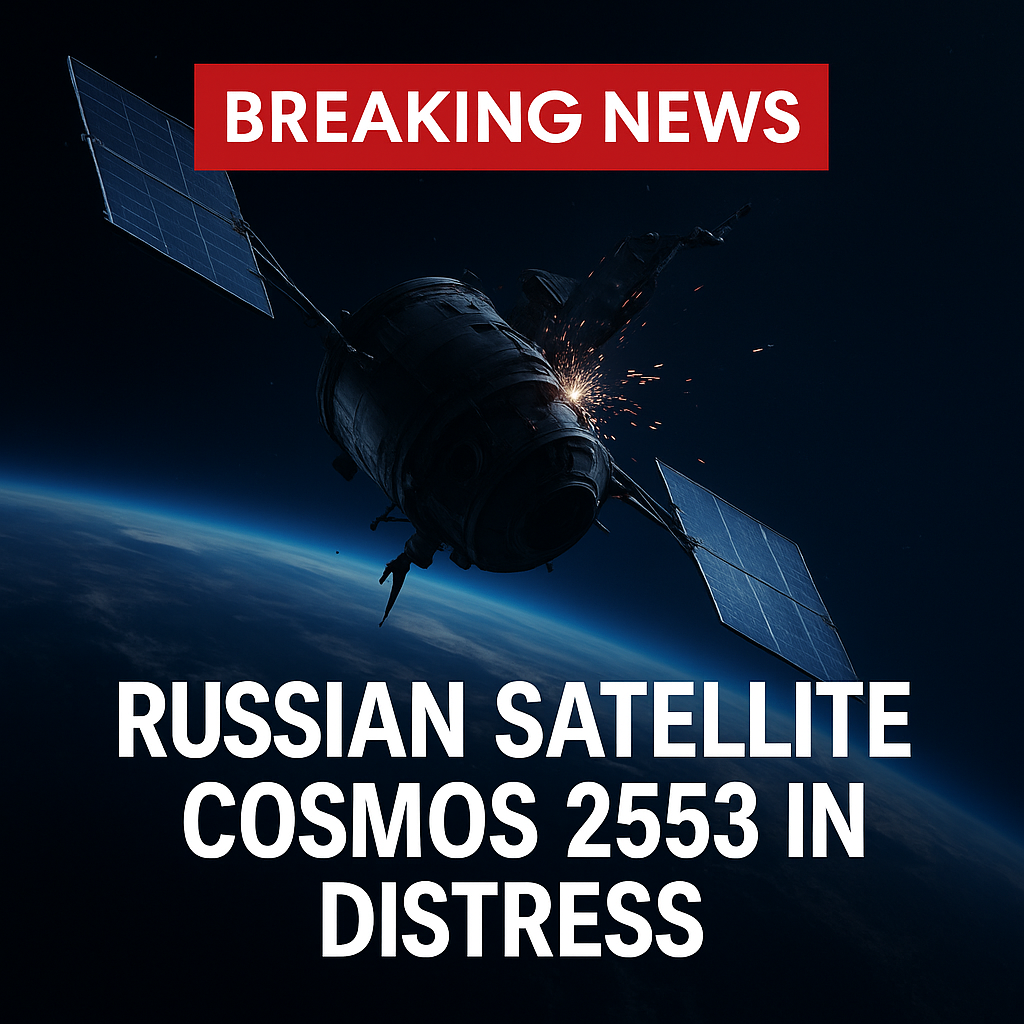A Russian satellite named Cosmos 2553 is showing signs that it may no longer be working properly. Launched just weeks before the Ukraine conflict began in 2022, this satellite was sent into a high-radiation orbit around 2,000 kilometers above Earth — a region most satellites avoid because of harmful radiation levels.
Russian Satellite Shows Signs of Malfunction
Over the past year, experts from space-tracking firms like LeoLabs and Slingshot Aerospace have noticed strange behavior from the Russian satellite Cosmos 2553. Their data suggests the Russian satellite is spinning out of control, a movement known as “tumbling.” This is often a sign that the satellite is damaged or has lost its ability to control itself.
Although the Russian satellite Cosmos 2553 is not officially labeled a weapon, experts believe it plays a key role in testing space technologies that could support the development of nuclear anti-satellite weapons. These weapons are designed to knock out entire networks of satellites — like Starlink, which has helped Ukrainian forces stay connected.
Russia denies that the satellite has any military use and says it is for scientific research. But the Russian satellite’s orbit, behavior, and structure suggest otherwise, according to US analysts.
Terrifying Russian Nuke Threat in Space Alarms NATO, Ignites Global Security Fears
Tracking Data Confirms Strange Movements
Early warning indicators of disaster were detected in late 2023 by radar and optical tracking devices. Anomalies were initially discovered in November by LeoLabs, which runs a global radar network. By December, they confidently stated that the Russian satellite Cosmos 2553 was in a tumbling position.
Slingshot Aerospace also observed changes in the Russian satellite’s brightness, a clue that it was spinning and possibly unable to perform its functions. In May 2024, the company again noticed irregular brightness, confirming possible instability.
More recently, there have been signs that the Russian satellite Cosmos 2553 may have slowed its tumble or partially stabilized. Experts are still unsure about the satellite’s actual state, though. While it may no longer be tumbling uncontrollably, it is still unclear whether the satellite has regained full functionality or if the damage it experienced has rendered it incapable of performing its original mission. The satellite’s operational status remains a mystery, as it is difficult to determine whether it is still able to carry out its testing objectives or if the malfunction has rendered it completely inoperable.
US Space Command has confirmed that they have been monitoring the Russian satellite’s orbit and noted changes in its altitude, which could indicate attempts to stabilize or ongoing problems with its control systems. However, they have not shared specific details regarding the satellite’s current state or any actions it may have taken since these changes were observed. A spokesperson for the Space Command mentioned that the satellite’s behavior does not align with the mission it was supposedly designed for — scientific testing in a high-radiation environment. This inconsistency between the Russian satellite’s expected behavior and its actual performance only adds to the growing concerns about its true purpose and the potential risks it poses.
A Busy and Tense Space Environment
The number of military and civilian satellites in space is increasing. As countries like the US, Russia, and China continue to develop advanced space systems, there is growing concern about potential misunderstandings in orbit.
Cosmos 2553 is thought to be a component of a broader Russian program associated with intelligence and military activities. US defense agencies suspect that the satellite’s real role is to test equipment that could support future space-based nuclear weapons. These systems could damage or destroy multiple satellites at once through radiation or electromagnetic effects.
Starlink, the massive satellite network developed by a private company, has been used by Ukrainian forces in wartime communications. Because of this, Russia may see it as a military target, increasing tensions further.
These days, commercial tracking firms like Slingshot Aerospace and LeoLabs are essential to keeping an eye on objects in orbit. Their independent data helps national defense agencies understand which satellites are civilian and which could be military threats.
According to US officials, Russia’s space behavior, including the suspicious activity of Cosmos 2553, increases the risk of misjudgments and unintended escalation. The satellite’s unclear purpose and unusual behavior have placed it at the center of global attention.
While there are signs the satellite may have stabilized slightly, experts remain unsure about its current condition or whether it still has any operational use. Its failure — if confirmed — would mark a significant setback in Russia’s space military efforts.




